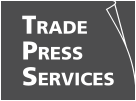
Outsourcing helps companies reduce costs, improve efficiency, scale operations, access specialized skills, and focus on essential business functions. By leveraging external providers, businesses can maintain steady growth without the commitment of hiring in-house employees.
The growth of the global outsourcing services market is fueled by technological advancements, The Great Resignation, shifts to remote or hybrid work environments, and myriad other factors. As outsourcing becomes more ubiquitous, now is the perfect time to leverage external expertise. To reap the rewards, however, it’s crucial to know the right steps to take—and the mistakes to avoid.
The Dos of Outsourcing
You’re looking for the best-fit outsourcing partner but is your business ready to work with one? Consider the following recommendations:
Be Clear About Your Goals and Expectations
Without clarity, companies risk misaligned priorities, missed deadlines, and subpar deliverables, leading to frustration and wasted resources.
Action steps:
- Clearly articulate objectives, such as improving efficiency, reducing costs, or expanding capabilities.
- Break down deliverables into manageable tasks and set achievable timelines to track progress.
- Specify quality standards to avoid misunderstandings with outsourcing partners.
For example, an e-commerce store outsources customer support to reduce response times by 10 percent within three months. To achieve this, they set clear expectations: respond to all customer inquiries within 12 hours, maintain a satisfaction score above 90 percent, and provide weekly progress reports to ensure alignment.
Create and Streamline Your System
Now that you’ve established clear goals and expectations, do you have the right system to support them? Take it from James Clear: “Goals are good for setting a direction, but systems are best for making progress.” Clear emphasizes that problems arise when systems are inadequately designed. It’s like setting a destination on a map without checking if the vehicle has fuel.
System documentation may include:
- Contracts: Detailed contracts outlining the scope of work, deliverables, deadlines, key performance indicators (KPIs), payment terms, and termination clauses.
- Standard operating procedures (SOPs): Detailed instructions for performing specific tasks and roles.
- Customer service protocols: Pre-written scripts for common order inquiries, returns, or complaints.
- Tool tutorials: Short guides on how to use the company’s software systems and other tools.
- Performance monitoring: Tracking KPIs and other success metrics to measure the outsourced partner’s performance against established targets.
- Quality assurance: Processes to monitor and measure the quality of services provided, including regular checks and feedback loops.
Instead of weeks of hands-on training, a partner can be fully operational within a few days. As a result, businesses can save countless hours and ensure consistency in operations.
Start Small with a Pilot Project
Before diving headfirst into a long-term outsourcing commitment, test the waters with a pilot project. A smaller-scale initiative helps you assess the partner’s capabilities, communication style, and alignment with your business needs without significant risk.
Examples for various industries:
- SaaS: A pilot project that identifies bugs and provides detailed reports.
- Retail: Mockups for a seasonal campaign to test creativity and adherence to branding guidelines.
- Technology: A pilot project focused on assessing vulnerabilities in one specific application.
- Marketing: Content creation and design of a brochure for a new product, service, or target market.
- Education: Course creation with a single module to gauge the partner’s instructional design capabilities.
- Finance: One client’s payroll to assess accuracy and compliance.
- Publishing: A single article to assess quality and turnaround time.
Focus on Communication and Collaboration
According to Economics Discussions, communication cements an organization or disrupts it. A transparent relationship fosters trust, minimizes misunderstandings, and keeps everyone on the same page.
Action steps:
- Schedule regular check-ins: Set up recurring meetings to discuss progress, address challenges, and align on the next steps.
- Leverage project management tools: Use platforms like Asana, Trello, or Jira to provide real-time updates, track milestones, and streamline workflows.
- Document communication channels: Clearly define how and where communication will happen (e.g., Slack or Teams for quick updates or email for formal requests).
- Encourage open feedback: Create an environment where both your team and the outsourcing partner share insights, challenges, and improvement suggestions freely.
Protect Your Data and Intellectual Property
Outsourcing often involves sharing sensitive information. Taking proactive steps to protect your assets ensures trust and prevents potential legal or financial issues.
Action steps:
- Draft comprehensive contracts: Include non-disclosure agreements (NDAs) and intellectual property ownership clauses to clearly outline the responsibilities and restrictions of your outsourcing partner.
- Use secure systems: When sharing sensitive files with your outsourcing partner, using secure systems is non-negotiable. Encryption ensures that only the intended recipient can view the data, protecting it from unauthorized access or breaches. Use Google Workspace or Dropbox.
- Conduct security audits: Regularly review your systems and practices to ensure compliance with data protection standards and identify potential risks.
The Don’ts of Outsourcing
Now that you know what to do, it’s equally important to understand what not to do. Even the best outsourcing strategies can fail if critical missteps are made.
Don’t Outsource Core Competencies
Your core competencies steer your company toward success—keep your hands firmly on the wheel. Delegating critical tasks to external partners can dilute brand identity, lower quality control, and compromise market position. For example, if a SaaS company outsources its core product development, it risks losing control over innovation and quality, making it harder to differentiate from competitors.
Don’t Prioritize Cost Over Quality
Think outsourcing is all about saving money? Think again. While cost savings can be a benefit, prioritizing the cheapest option over quality can end up costing much more in the long run. Remember, quality isn’t expensive—it’s priceless when it comes to maintaining reputation and achieving business success.
Action steps:
- Evaluate the true cost: Consider the potential expense of fixing mistakes, delays, or dissatisfied customers caused by substandard work.
- Choose value over price: Focus on finding a partner who offers the best balance of affordability and proven expertise.
- Inspect their track record: Review portfolios, request references, and ensure the partner’s quality standards match your expectations.
Don’t Ignore the Importance of Onboarding
Skipping the onboarding process might seem like a time-saver, but it often leads to confusion, misalignment, and costly mistakes. Take the time to onboard your partner to set the stage for a successful collaboration.
Suppose a marketing agency outsourcing content writing skips onboarding, assuming the freelancer understands their brand tone. The result? Inconsistent messaging that doesn’t align with the brand, requiring extensive rewrites and delays.
Action steps:
- Provide clear documentation: Share detailed guides, templates, and SOPs to give your partner a clear roadmap.
- Set expectations early: Clearly outline deliverables, quality standards, and communication protocols during the onboarding process.
- Offer training sessions: Host live or recorded sessions to familiarize your partner with your tools, systems, and company culture.
- Assign a point of contact: Designate one team member as the go-to person for questions and support during the transition.
Don’t Overlook Legal and Compliance Factors
Imagine a healthcare organization outsourcing its patient data management to a third-party vendor. They neglected one critical step, however—ensuring compliance with HIPAA regulations. Unfortunately, a data breach occurs, leading to hefty fines and a loss of trust from patients. This scenario could have been avoided with a simple compliance check.
Ensure that your outsourcing partner adheres to compliance standards to prevent costly repercussions.
Don’t Expect Instant Results
Building a successful partnership takes time. The initial phases of collaboration are essential for setting the foundation. Expecting immediate outcomes can lead to frustration and misalignment.
While outsourcing partners bring valuable expertise, they need time to familiarize themselves with your business, processes, and goals. Patience during the early stages ensures long-term success.
Pro tip: Measure progress gradually and be open to small adjustments as both sides fine-tune the partnership.
Maximizing Success with Outsourcing

The choice to outsource isn’t a reflection of internal shortcomings or a lack of commitment. Rather, partnering with specialists is a strategic approach that allows companies to focus on enhancing their core capabilities. By outsourcing certain functions, businesses can address resource constraints while alleviating pressure on internal teams. Outsourcing can be a game-changer for your business by introducing innovative approaches, specialized expertise, and a fresh perspective. By taking a strategic approach to outsourcing, companies can open the door to new opportunities and a new level of success.

